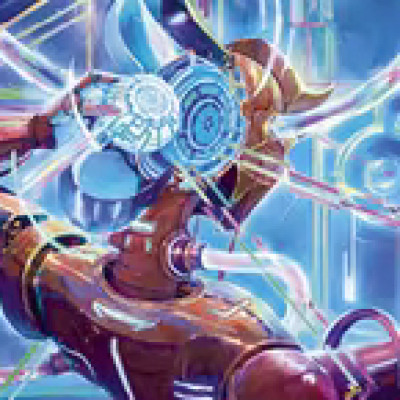The Warrior class is a versatile class with options for control, midrange, and aggro. While they don’t outshine more specialized classes in their areas, they can adapt to their opponent, choosing the best strategies into each class archetype. Their defensive capabilities are impressive, with access to some of the strongest armor in the game- excluding Guardians- and a class-specific defense reaction to bolster the generic ones.
Dorinthea is the original Warrior, and exemplifies the versatility better than either Boltyn or Kassai.
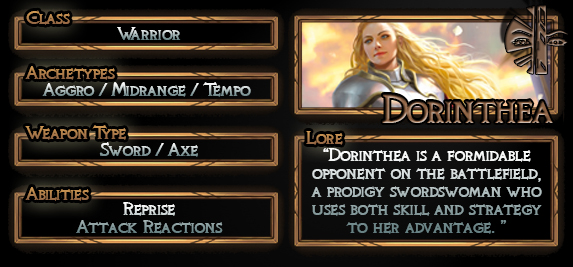
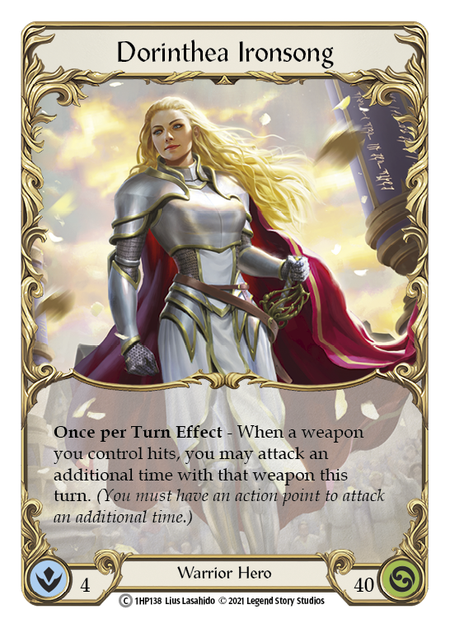
Dorinthea's hero ability is easy to misunderstand, especially if she's your entry point to the game. Here's what it does and what it doesn't do:
- It does allow you to use a 'once per turn' weapon a second time.
- It doesn't give you an action point.
Because of this, Dorinthea needs to give her weapon go again if she wants to take advantage of her ability to use her weapon twice.
Pro Tip: If you're using a 2-handed weapon such as Dawnblade, it's important to make sure your first weapon swing hits! Even if you give it go again, if it doesn't hit, Dorinthea's ability won't trigger and you won't have a second swing available to you!
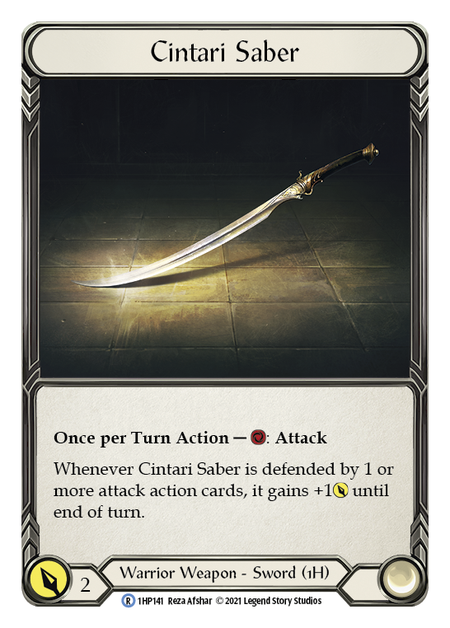
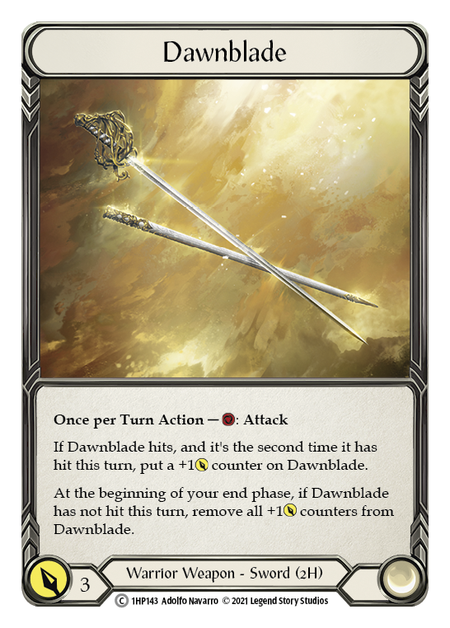
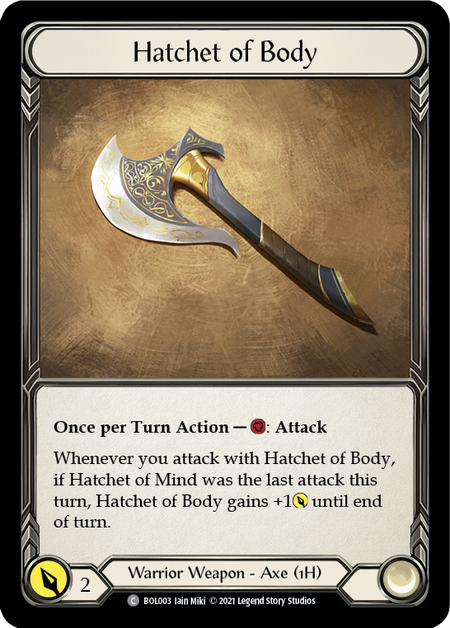
Dorinthea can run the Hatchets of Body and Mind, Dawnblade, or, less frequently, even Cintari Sabers. While any weapon can work for your preferred strategy, they each have archetypes towards which they lean more strongly. Dawnblade decks prefer an aggro or midrange strategy to maximize the number of counters available, while axes and sabers prefer midrange to control, maximizing on Valiant Dynamo to block.
It can be useful to compare two heroes who align with the same class to discover what your hero should be focusing on. Dorinthea has a very different play pattern than Boltyn; you can learn more about him in his own FAB101 here.
Strategic Angles

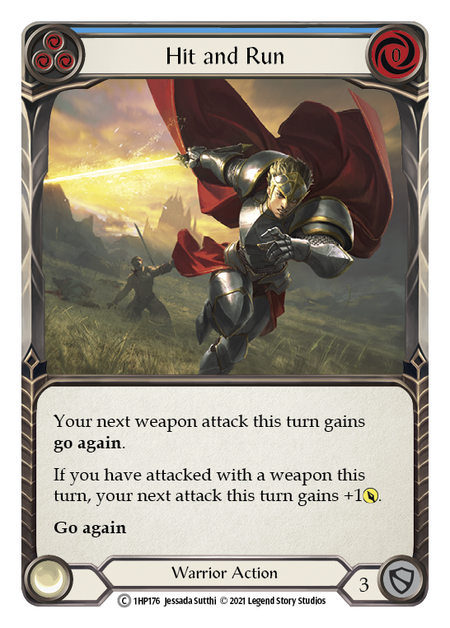

All Dorinthea decks have commonalities. Cards that give go again, like Warrior’s Valor, Hit and Run, and Glint the Quicksilver are required if you want to make any use of Dori's ability.
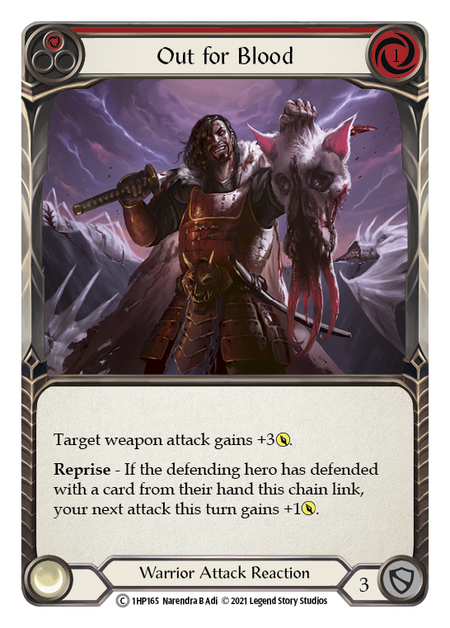
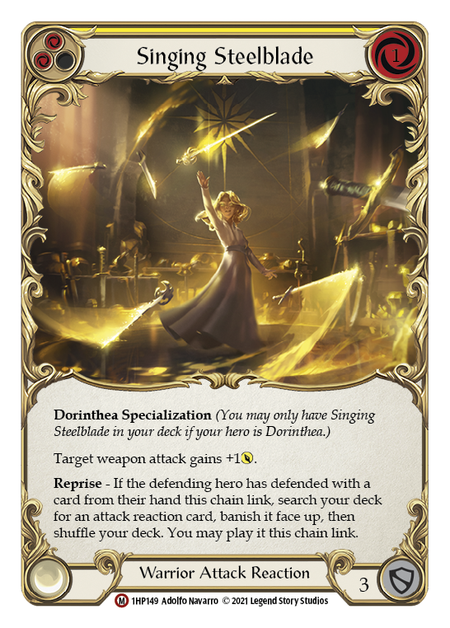
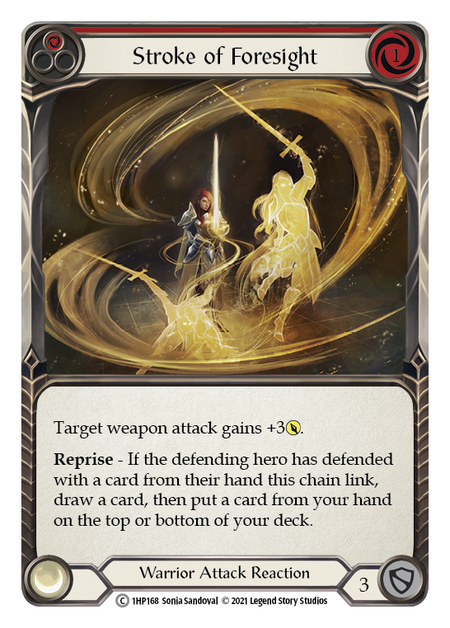
Attack reactions comprise half of the Warrior card pool, to the complete exclusion of attack actions; they are essential to ensure your sword hits, especially that critical opening hit! These are often where personal preferences come into play, but a few of the most common are Stroke of Foresight, Out for Blood, and Singing Steelblade.
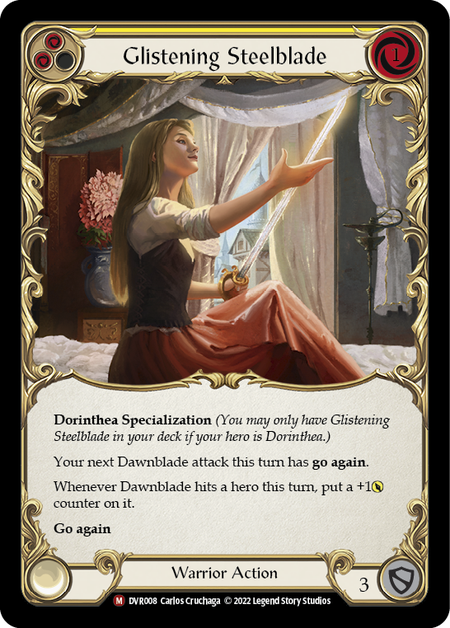
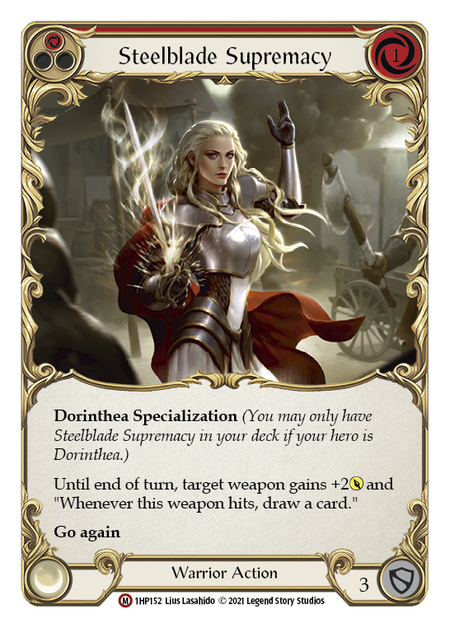
Non-attack action cards can also add variety to your consistent pattern of swordplay. Steelblade Supremacy presents a major risk of snowballing; and Glistening Steelblade has become a hot new inclusion for its ability to quickly add +1 counters to your weapon(s).
Aggro builds will generally run a high number of attack reactions- in particular, reactions that cost 1 and grant +3. The goal is generally to race the opponent, either forcing them to block in the face of dangerous on-hit abilities with Dawnblade, or sheer damage output with Cintari Sabers and Hatchets. Midrange decks are unfavored when facing these decks; their usual plan of blocking a bit to do a bit more back means you can often trigger reprise, a keyword giving a card extra abilities when an opponent blocks with a card from hand.
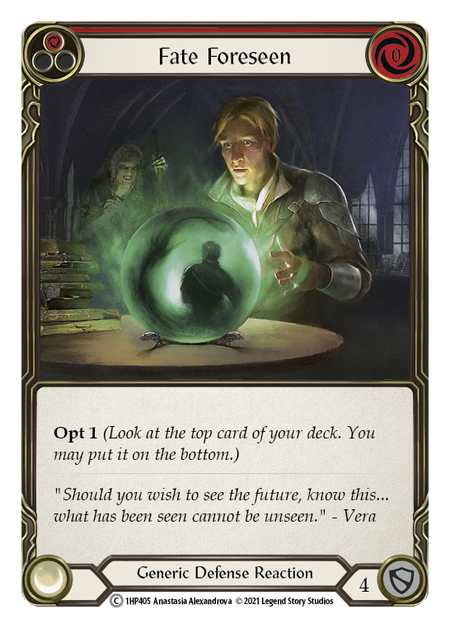
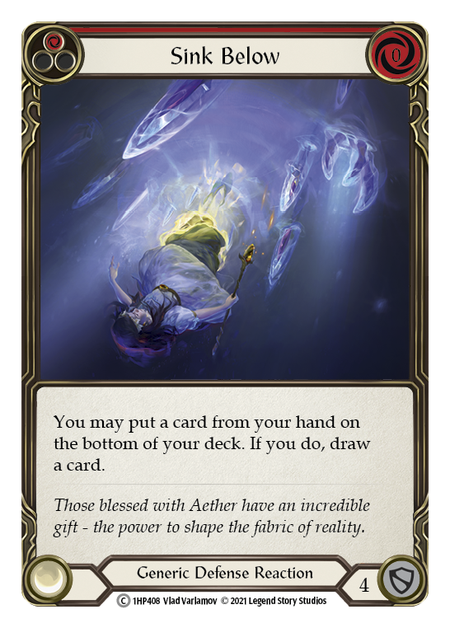

Control builds will invest more card slots in defense reactions like Sink Below, Fate Foreseen, and potentially Unmovable. The strategy also varies, using cards more to block than to augment weapon attacks. This gives them more of an edge against aggressive heroes like Dash or Chane- decks that can run out of credible threats if you can block out enough damage.
Midrange decks might run some defense reactions, but the primary difference is one of strategy rather than of card composition. The goal is to block some damage, while keeping enough cards to pose a credible threat. The ideal turn for a midrange strategy is to use 1-2 cards to block, supplemented with equipment as needed to prevent on-hit effects- keeping 1 on your own turn to pitch, and 1 to give your weapon go again. Ironically, this is often more effective against aggro decks than even the control strategy above, because the aggro opponent can’t afford to let weapons hit every turn, but blocking weakens their turn to a manageable threat.
Choosing Your Weapon


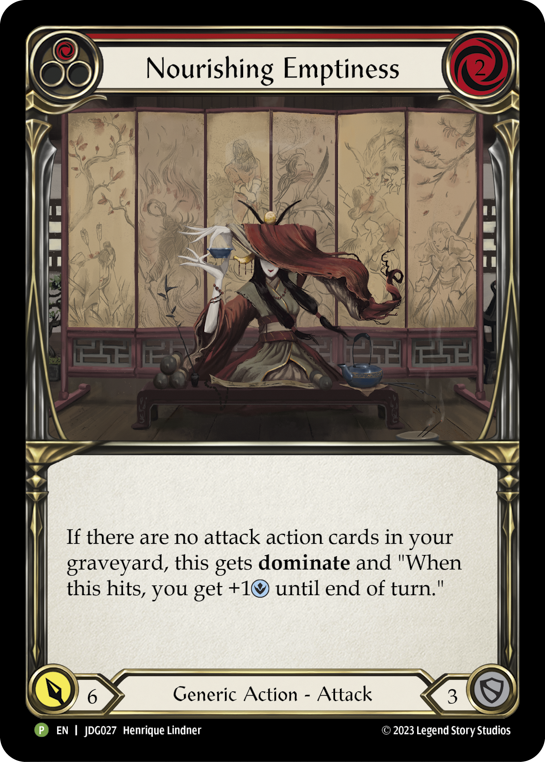
Dawnblade leans heavily into reprise, with the built-in 'on hit' providing an incentive to block. While you don’t get go again if Dawnblade doesn’t hit, in most cases you wouldn’t be able to use an action point without hitting. When you do have unconditional go again, there are options for attack actions that are included frequently. Many decks will run Nourishing Emptiness and/or Command and Conquer.
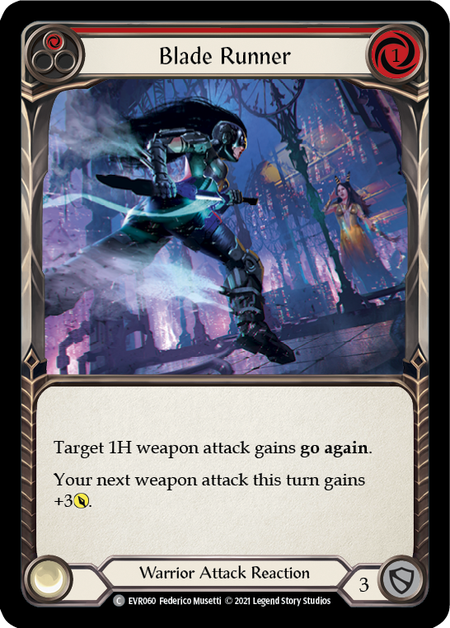
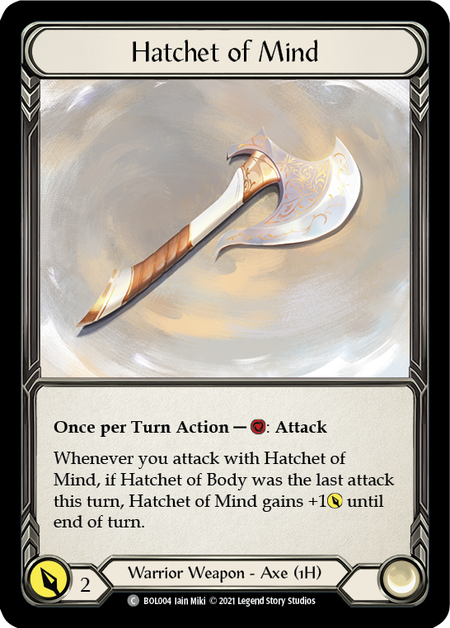
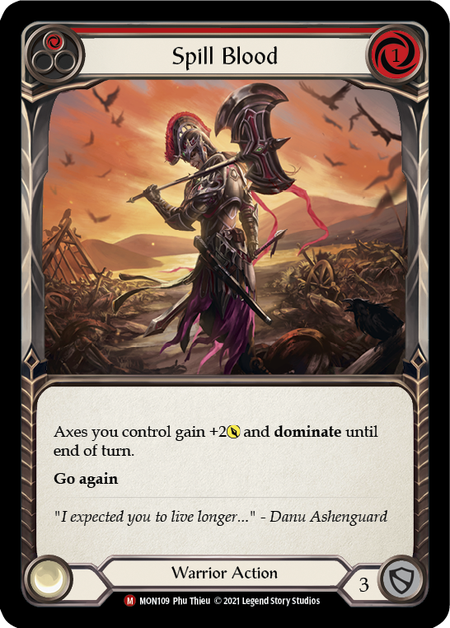
Using axes is another good option, giving you access to another attack reaction giving go again (Blade Runner), a turn-long buff to both axes (Spill Blood), and a reliable Valiant Dynamo trigger. It also focuses much less on reprise, providing less reliance on the actions of your opponent. Because of this, a midrange strategy is particularly effective while wielding axes. Attacking twice can usually be accomplished with a blue card to pitch and a card to give your weapon go again, letting you reset Valiant Dynamo while blocking with two cards.
Aggro builds require a particularly high blue count because the goal is to attack three times with your weapons. This requires at least a blue for the axes alone, and potentially another card depending on the sources of go again. Fyendal’s Spring Tunic is ideal for this.

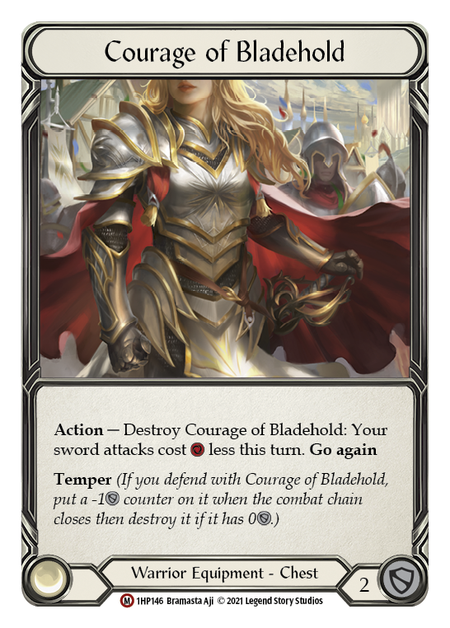
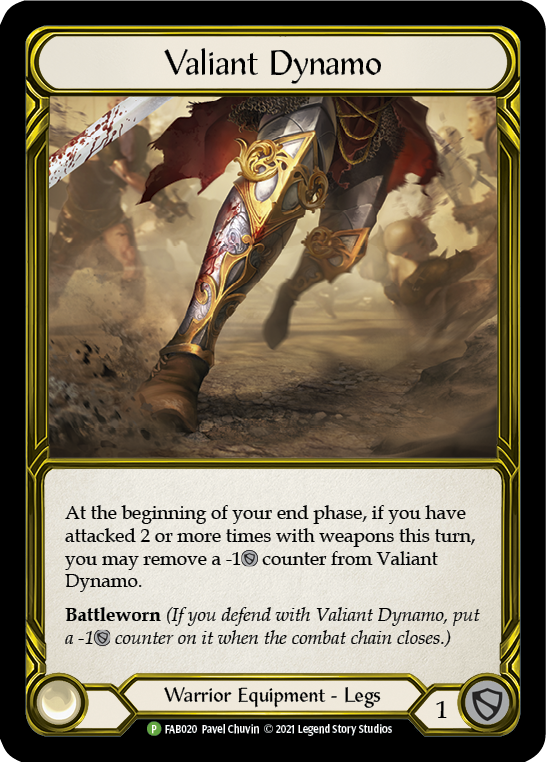
A Sabers deck is a far more unconventional deck, with the only advantages it holds over axes being Slice and Dice, Courage of Bladehold, and arguably a better weapon ability. In Blitz, Kassai truly pushes this deck to its limits, making a Cintari Dori feel like a poor imitation.
A Different Approach
The first time you face a Dorinthea, you'll feel like she's absolutely broken. Her ability to climb over your blocks with attack reactions makes her feel like an unstoppable force. Truly, the existence of Dorinthea is a teaching tool that forces you to think differently about the game, and more specifically, how and when to block.
But with time, Dorinthea's plays begin to feel more telegraphed. You'll learn to read her as well as she reads you, and develop defenses and strategies that you can fall back onto when deciding how to respond to her.
What this means is that Dori doesn't spend much time in the upper tiers of competitive play right now. That doesn't mean she can't do it- in fact, it's precisely because she could that players now consider her an early learning experience that you must overcome before competitive potential is realistic.
While Dorinthea may not be the top hero of the meta currently, she’s fun to play, versatile, and has the potential to overcome her weaknesses in the future.


